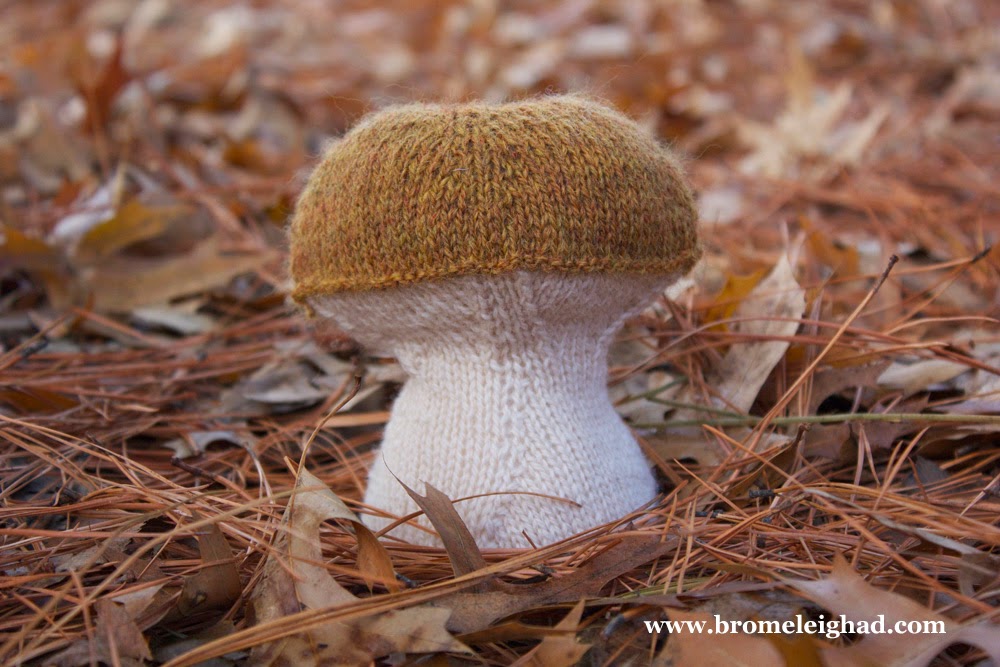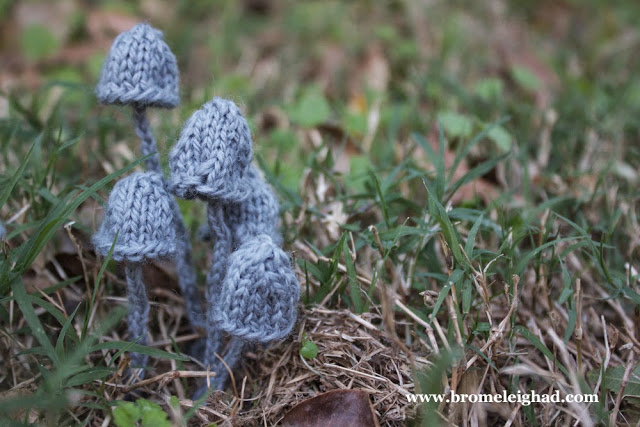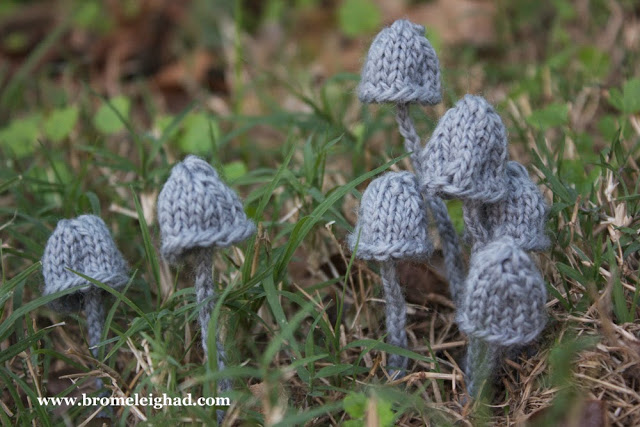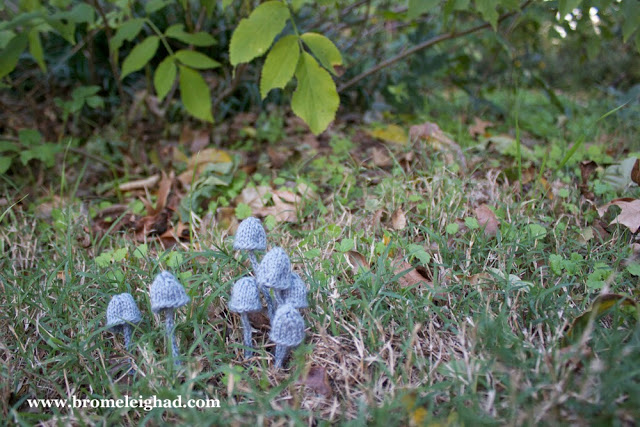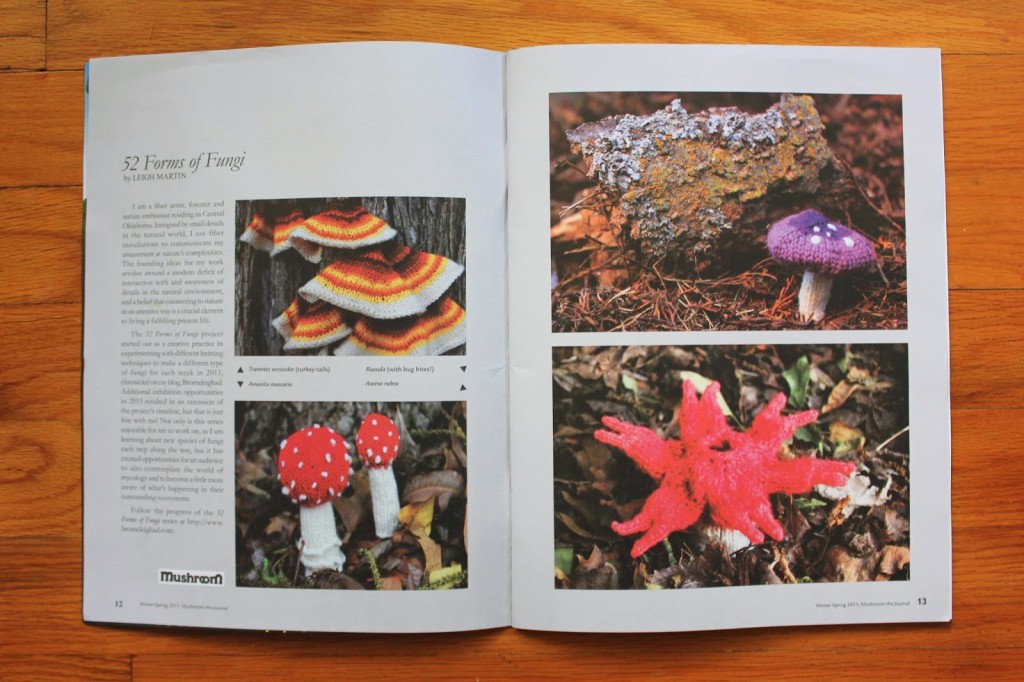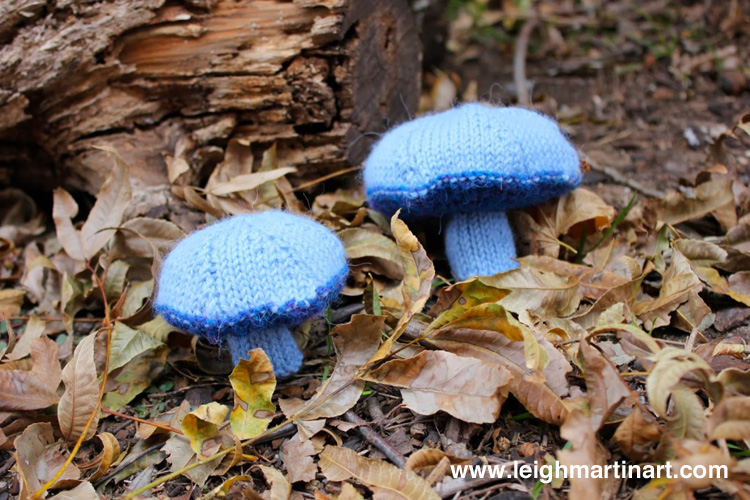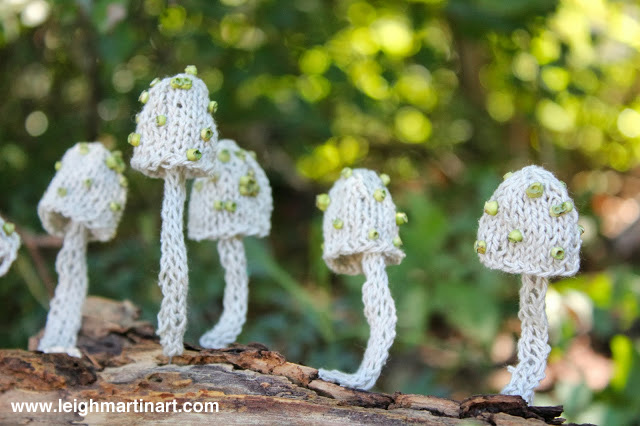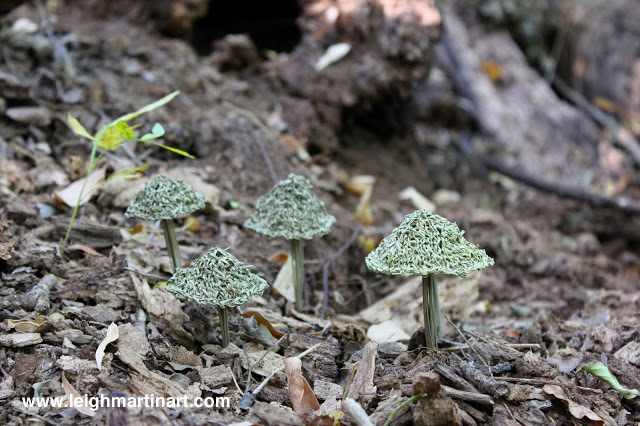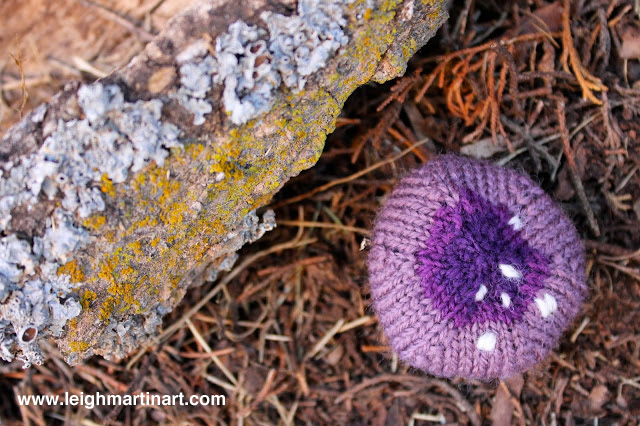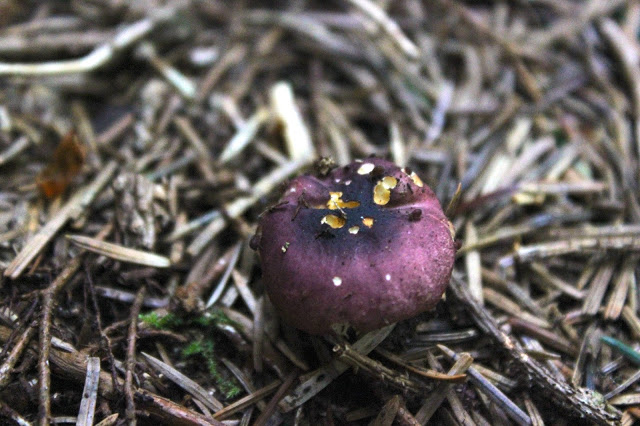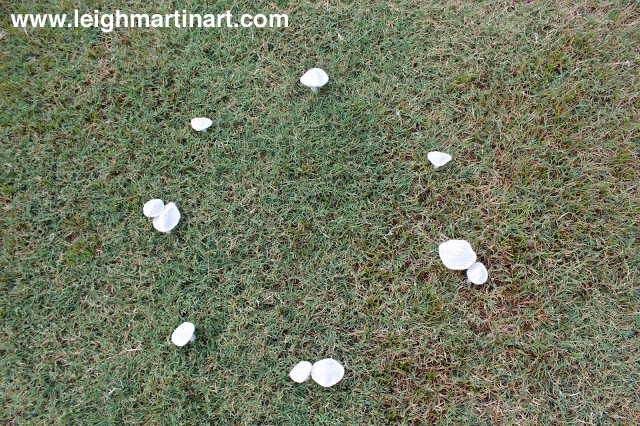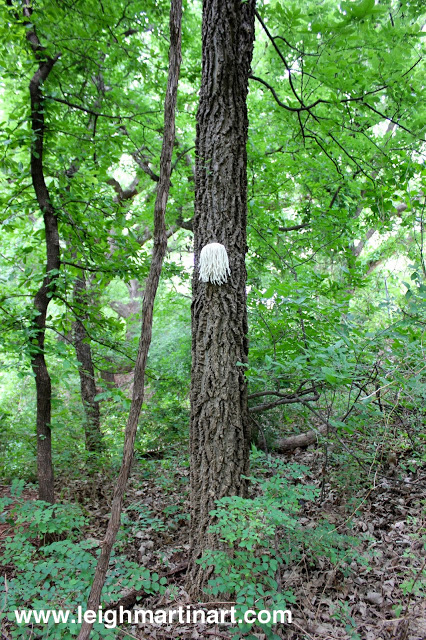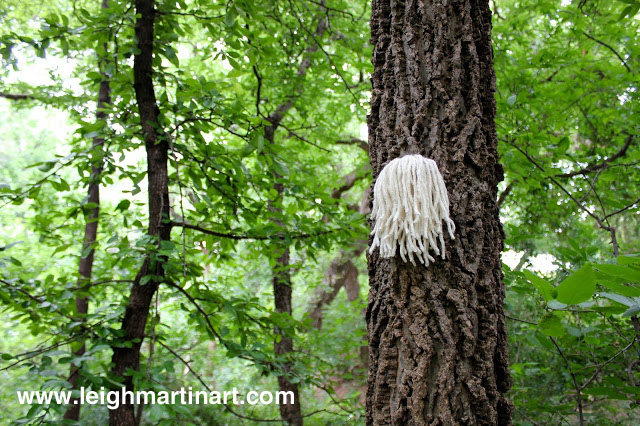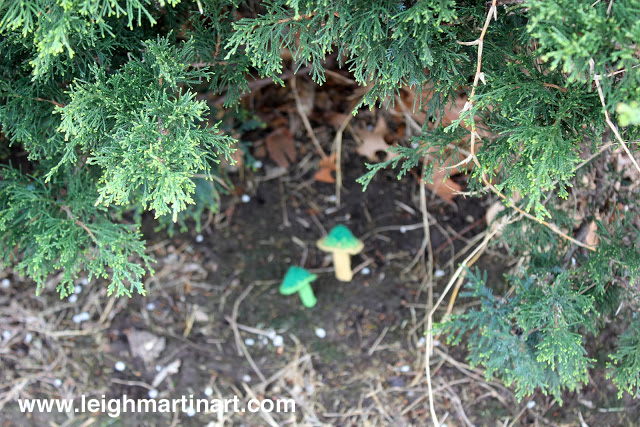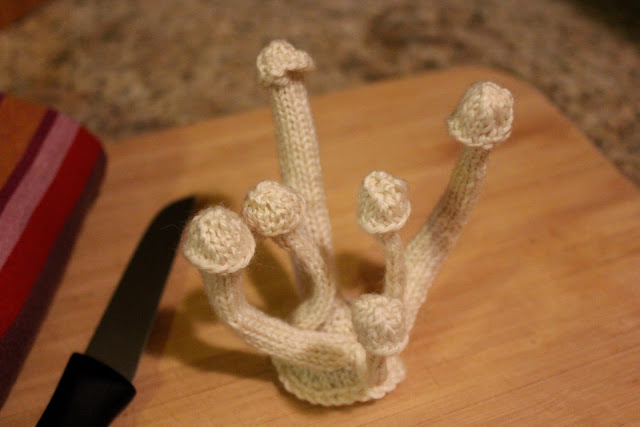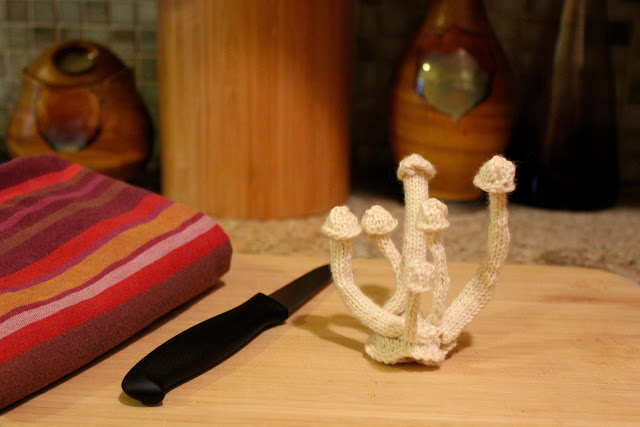The odds seem to be against me this week in getting photos of the phases I've been working on. I made it to a favorite photo spot just as the sun was going down yesterday to capture this species and another that will be posted tomorrow, only to realize that I left my SD card at home (At least I had tacos to look forward to afterward). This morning before work, it was still too dark by the time I had to leave. This afternoon--- steady rain and dim outside. This leads me to realize that every phase to date has been shot in clear weather, so why not get a couple when it's damp? It's a nice contrast. In any case after a little while of crawling around in the back yard in my raincoat...
Western amethyst laccaria. Not found in my area, but I would love to run across it one day. I don't know what it is, but the purple fungi grab my attention the most. My favorite about this species was the variegation in color of the stalk. I knitted with two strands of different shades to achieve that effect.
This installation was created for my 52 Forms of Fungi project. Check out more phases from this project, here.


